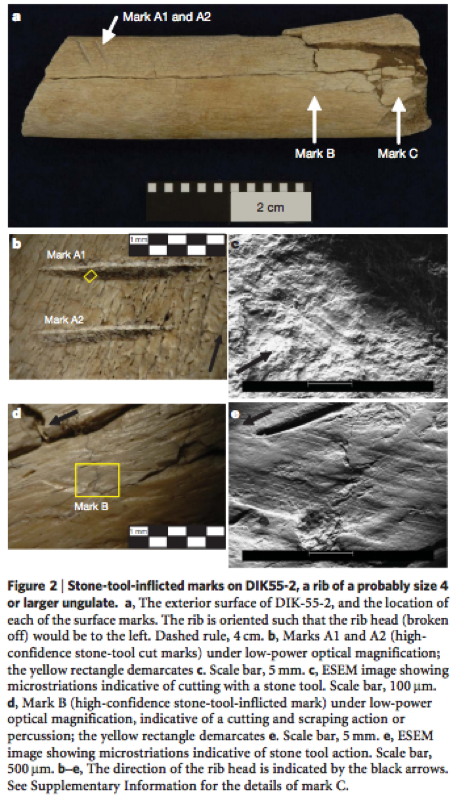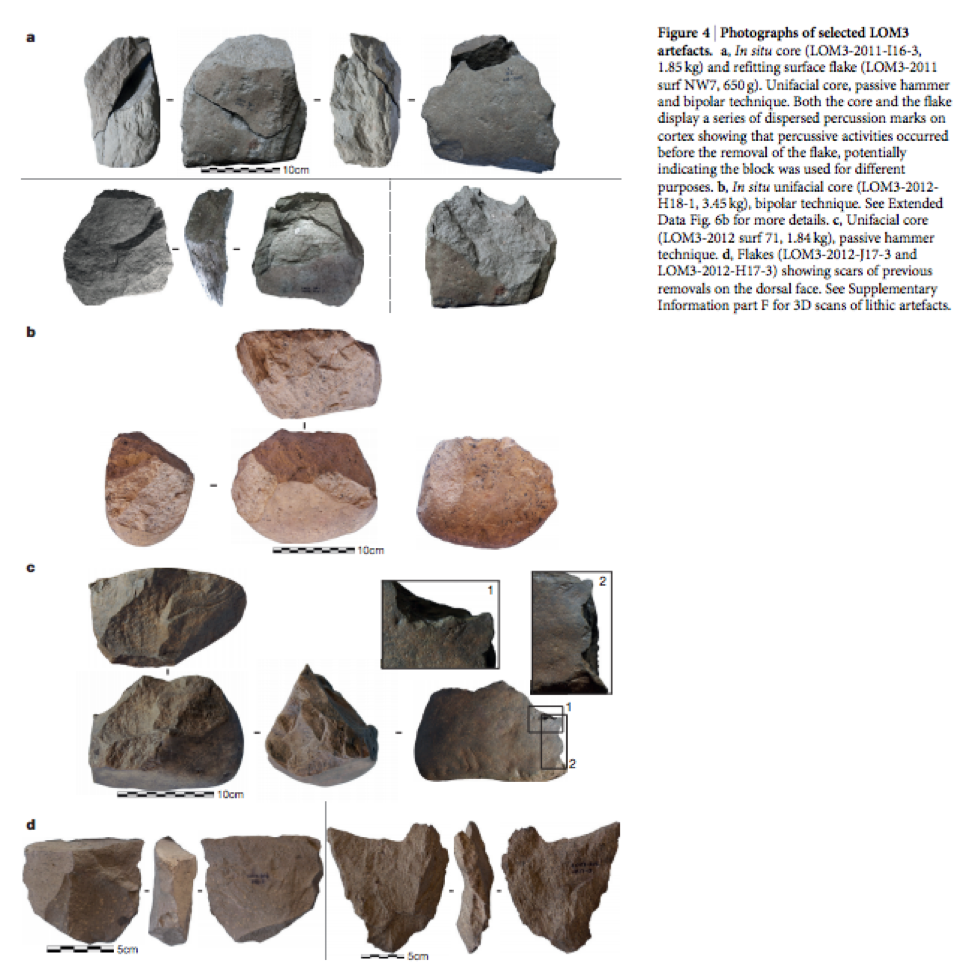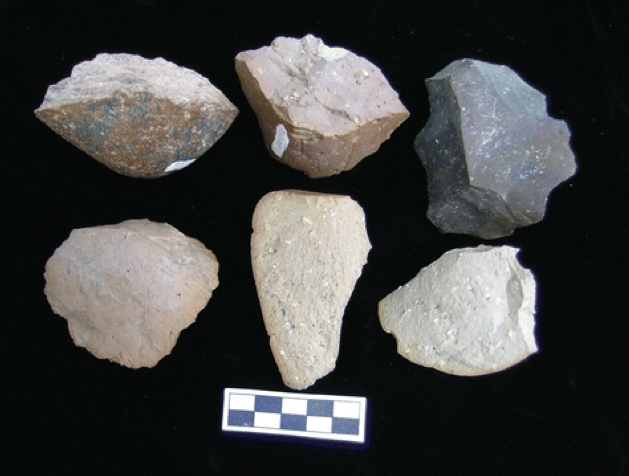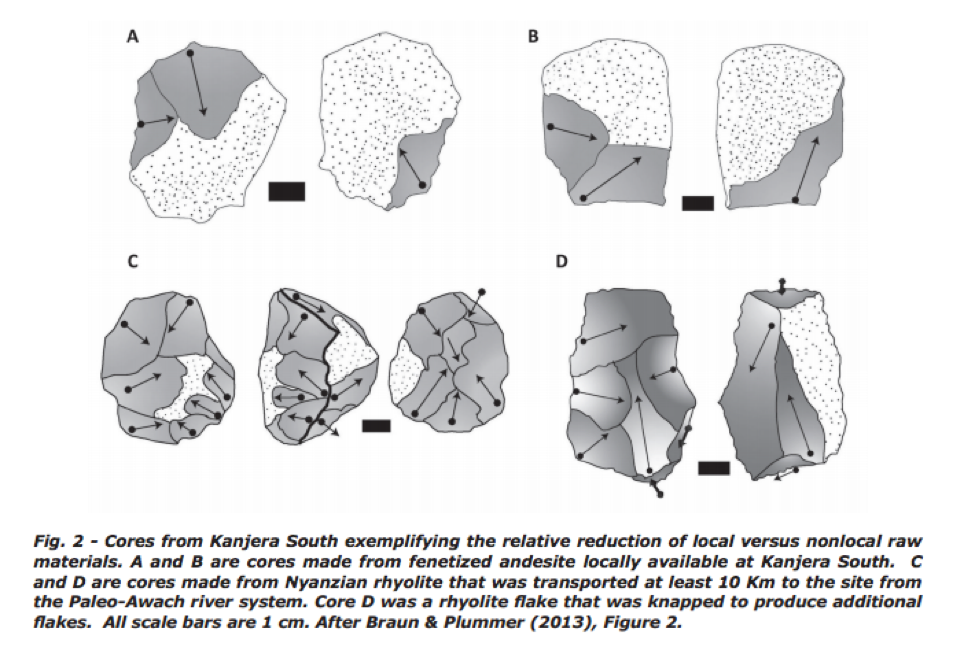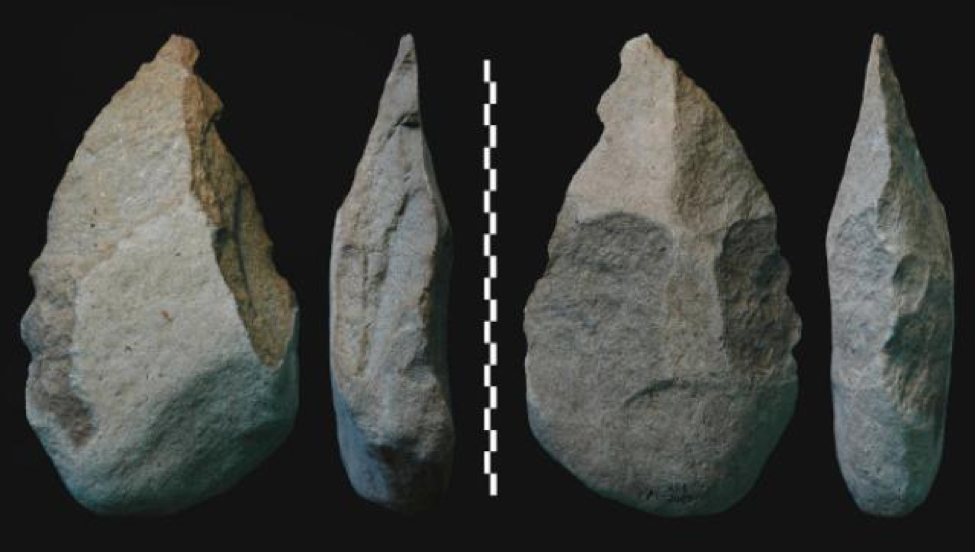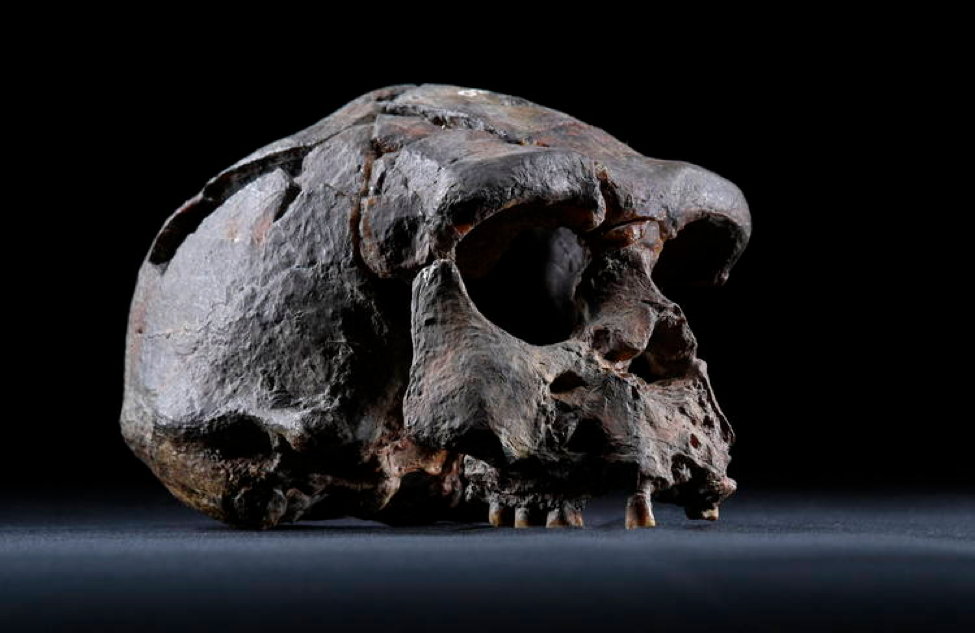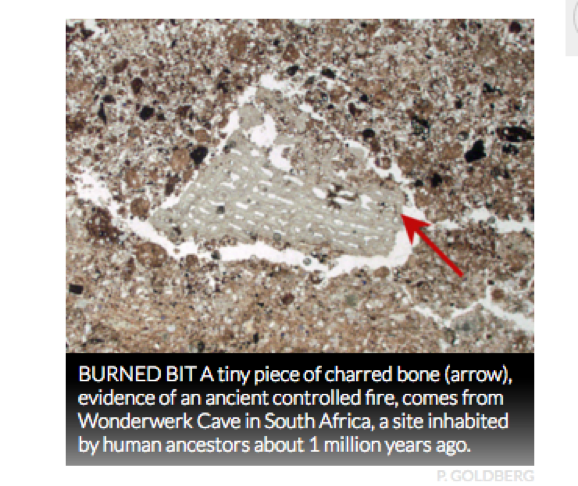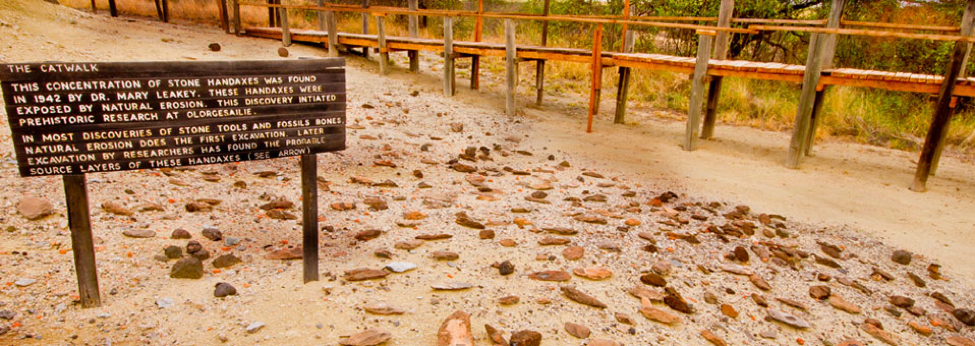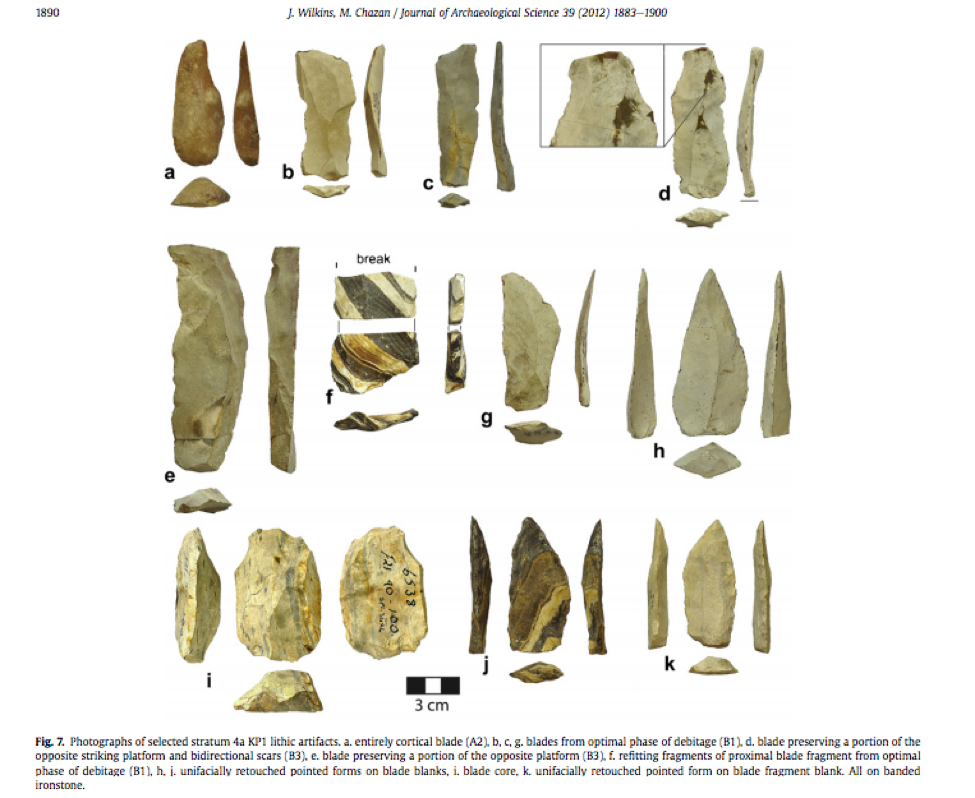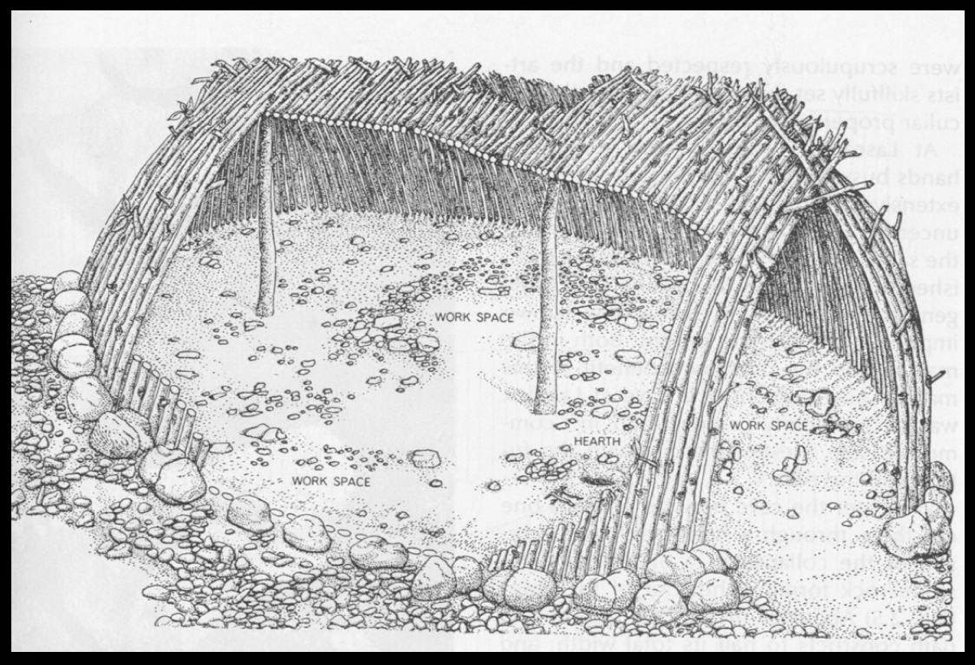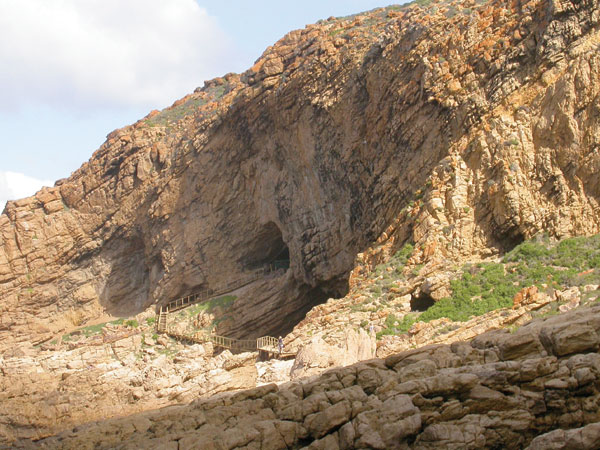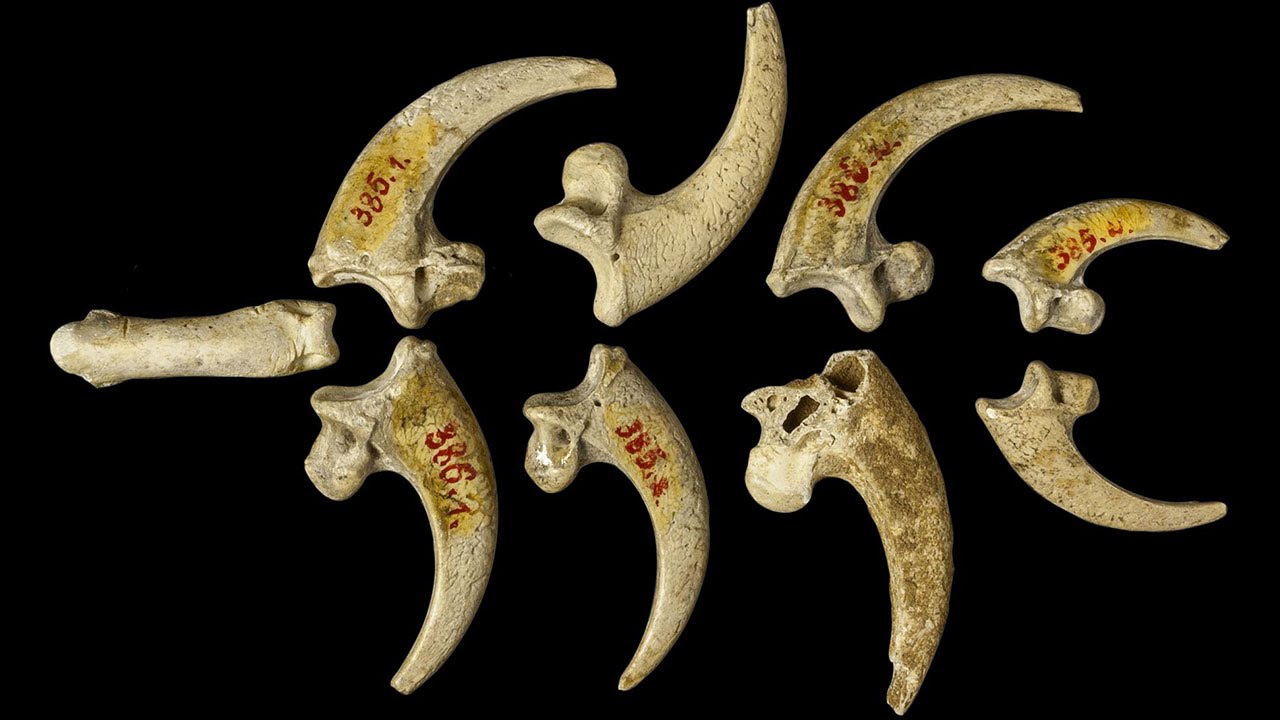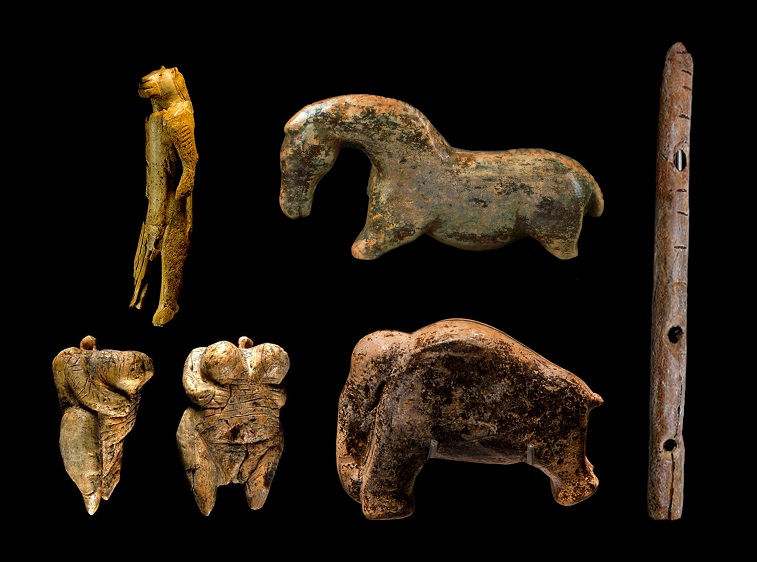Prehistoric Archaeology

The prehistoric archaeological record sheds light on the evolution of human cognitive abilities. The archaeological record has yielded important information regarding technological patterns, foresight and planning, skill, cognitive capabilities, and dexterity. It is appreciated that at any stage of human evolution, we can only be sure that we are seeing minimal expressions of cognitive abilities in the form of the material culture and behavioral patterns of prehistoric hominins. Material culture, nonetheless, is the most important and reliable source of information pertaining to cognitive evolution that we can recover in the archaeological record. We can search for the most complex and exceptional forms of material culture at different stages of human evolution to see evidence for the most advanced level of cognitive abilities and skill manifested at that time.
Read More
Archaeological Discoveries that have Contributed to Our Current Understanding of Human Cognitive Evolution
LOCATION
SPECIES
BEHAVIORS
COGNITION
Dated to (million years ago)
LOCATION : Afar, Ethiopia
DATED TO : 3.42 - 3.24 Ma
Major Discovery
Hominins prior to 2.6 Ma left behind relatively few traces of their cognition and behavior for us to discover in the archaeological record. Possibly the earliest evidence for stone tool use by hominins comes from the site of Dikika in Ethiopia, where a team led by Zeray Alemseged of the California Academy of Sciences in San Francisco discovered two 3.4 million-year-old fossilized animal bones that bear potential cut marks caused by stone tools. This finding could indicate that Australopithecus afarensis butchered large mammals with the assistance of stone tools.
Read more about this discovery
Hominins prior to 2.6 Ma left behind relatively few traces of their cognition and behavior for us to discover in the archaeological record. Possibly the earliest evidence for stone tool use by hominins comes from the site of Dikika in Ethiopia, where a team led by Zeray Alemseged of the California Academy of Sciences in San Francisco discovered two 3.4 million-year-old fossilized animal bones that bear potential cut marks caused by stone tools. This finding could indicate that Australopithecus afarensis butchered large mammals with the assistance of stone tools.
Read more about this discovery
LOCATION : West Turkana, Kenya
DATED TO : 3.3 Ma
Major Discovery
Stone tools dating back to 3.3 Ma were discovered at Lomekwi by a team led by Sonia Harmand of Stony Brook University. If this date turns out to be correct, then that would mean that these are the oldest stone tools yet known, and it would push the date of chipped stone technologies back by 700,000 years, before the appearance of the genus Homo.
Read more about this discovery
Read more about this discovery
LOCATION : Afar, Ethiopia
DATED TO : 2.6 Ma
Major Discovery
When first reported by Sileshi Semaw and his team in 1997, the 2.6 million-year-old artifacts found at the site of Gona were thought to be the oldest chipped stone tools in the world. With the discovery of 3.3 million-year-old tools at the site of Lomekwi, Gona may now only represent the earliest evidence of the Oldowan industry.
Read more about this discovery
Read more about this discovery
LOCATION : Kenya
DATED TO : 2 Ma
Major Discovery
Numerous, relatively complete carcasses of small hoofed animals were found at Kanjera South, where they had been butchered with Oldowan stone tools. These tools were made from raw materials that were transported over 10 km. This site represents the earliest evidence for persistent carnivory by hominins in the archaeological record.
Read more about this discovery
Read more about this discovery
LOCATION : Republic of Georgia
DATED TO : 1.85-1.78 Ma
Major Discovery
Dmanisi represents the earliest known migration of early humans outside of Africa. The hominins at this site were small in stature and brain size and made Oldowan stone tools.
Read more about this discovery
Read more about this discovery
LOCATION : West Turkana, Kenya
DATED TO : 1.76 Ma
Major Discovery
After more than 800,000 years of making simple Oldowan flakes, there was a shift toward making large cutting tools and bifacial handaxes, which are characteristic of the Acheulian industry. The earliest dated Acheulian stone tools were discovered by Christopher Lepre (Rutgers University) and his team at the site of Kokiselei 4 and date to 1.76 Ma. Other early occurrences of the Acheulian industry have also been found at Konso, Ethiopia, dated to 1.75 Ma, and FLK West, Olduvai Gorge, Tanzania, dated to 1.7 Ma. This early appearance of Acheulian tools coincides with an increase in brain size in early Homo.
Read more about this discovery
Read more about this discovery
LOCATION : Java, Indonesia
DATED TO : 1.6 Ma
Major Discovery
Sangiran is the earliest dated hominin site in Southeast Asia. When H. erectus arrived to this region, they were probably able to walk over land to the now island of Java because of lower sea levels. Changing sea levels over the next million years may have isolated this population from other hominins in Asia. Stone tools from this time period are rare in Java, which means that H. erectus likely relied on perishable materials like shells and bamboo for tools.
Read more about this discovery
Read more about this discovery
LOCATION : Atapuerca, Spain
DATED TO : 1.2 Ma
Major Discovery
Sima del Elefante is a cave site with the earliest dated hominin fossils and stone artifacts in western Europe. The lithic assemblage is characterized by low technical investment, and the stones were transported over a very short distance.
Read more about this discovery
Read more about this discovery
LOCATION : Flores, Indonesia
DATED TO : 1.02 Ma
Major Discovery
Stone tools at this site indicate an early occupation of the island of Flores by early Homo. While we know that fossil humans could reach some Indonesian islands, such as Java, by foot because of low sea levels at the time, Flores is a different story. Located east of the Wallace Line, this island could have only been reached by sea crossing. Occupation of this island may therefore represent the earliest example of manmade watercraft.
Read more about this discovery
Read more about this discovery
LOCATION : South Africa
DATED TO : 1 Ma
Major Discovery
A team of archaeologists returned to Wonderwerk Cave to examine the evidence for Peter Beaumont’s claim for control of fire as early as 1.7 Ma. The hearthlike feature that Beaumont had reported on turned out to be a natural feature and not manmade. The team made an important new discovery, however--evidence for burning of plant and animal remains in a younger layer dated to 1 Ma. These materials were burned within the cave at a temperature of 450-700° C, the temperature of a small campfire. This is the earliest evidence for controlled fire by H. erectus.
Read more about this discovery
Read more about this discovery
LOCATION : Kenya
DATED TO : 0.9 Ma
Major Discovery
Olorgesailie is an unusual site because of the thousands of handaxes that have been found there. Pigments older than 340,000 years have also been discovered at the site.
Read more about this discovery
Read more about this discovery
LOCATION : Central India
DATED TO : .7 - .35 Ma
Major Discovery
Bhimbetka is an archaeological site in central India, approximately 45 kilometers south of Bhopal. The site consists of a complex of 754 quartzite rockshelters which collectively contain some of the earliest evidence of humans living on the Indian subcontinent. Archaeological investigations have revealed that these rockshelter sites have been occupied throughout much of the entire history of human occupation of central India, ranging from the Lower Paleolithic, through the Acheulean, and into modern times. The central main cave in the Bhimbetka complex is Auditorium Cave, inside which was discovered some of the oldest known rock art in the world. These petroglyphs consist of groupings of hemispherical depressions and associated curvilinear grooves, which have been hammered into the extremely hard quartzite rock to depths ranging up to 13.4 mm. These depressions, also known as “cupules”, are the earliest known form of rock art and occur as early rock art throughout the world. A number of the cupules discovered here and at other nearby caves have been overlain by Acheulean deposits, and in a few cases, discovered in situ along with a Lower Paleolithic chopping tool industry that is entirely free of bifaces. Through these associations, archaeologists believe the petroglyphs to have been created between 700,000 and 350,000 ya.
Read more about this discovery
Read more about this discovery
LOCATION : South Africa
DATED TO : 0.55 - 0.50 Ma
Major Discovery
There have been several important discoveries at the site of Kathu Pan. The lithic assemblage at the site is one of the earliest occurrences of blade technology. The hominin toolmakers at this site used hard hammer percussion to strike off blades from extensively prepared cores. Some of these blades were then retouched to make them into points. There are also signs on the stone points that they were hafted to a shaft and functioned as spear tips, making this the earliest evidence for hafted multicomponent tools.
Read more about this discovery
Read more about this discovery
LOCATION : West Sussex, England
DATED TO : 0.5 Ma
Major Discovery
Boxgrove is a Lower Paleolithic site in England that consists of refined Acheulian handaxe tools and butchered animal bones, all of which were found in situ, or in an undisturbed context. The emphasis of the hominins at the site seemed to be on handaxes rather than flakes, as the flakes show no signs of retouch and remain where they fell during handaxe production. The handaxes were reduced almost completely with a soft hammer, such as an antler, rather than with a hard hammer, and the toolmakers prepared platforms on the bifaces to more effectively control the size and shape of the flakes they removed.
Read more about this discovery
Read more about this discovery
LOCATION : Java, Indonesia
DATED TO : 0.5 Ma
Major Discovery
In a fossil freshwater shell assemblage originally collected by Eugène Dubois in 1891, a team of researchers rediscovered a shell with a geometric design engraved into it. The sediment within the shells date the assemblage to 500,000 years ago, which means that the abstract design was likely made by H. erectus. This is currently the earliest evidence for abstract engraving in the archaeological record.
Read more about this discovery
Read more about this discovery
LOCATION : Atapuerca, Spain
DATED TO : 0.43 Ma
Major Discovery
The fossil bones of at least 28 archaic Neandertals were discovered in a pit of the Cueva Mayor-Cueva del Silo cave system of the Sierra de Atapuerca, along with one quartzite handaxe with no accompanying flake debris. Some researchers have suggested that the bodies of these individuals were purposely thrown down the 13 m shaft post-mortem by other members of their group. This has been a controversial claim, however. Other researchers argue that the presence of other animal remains in the pit in addition to human remains means that animals and hominins alike fell into the pit by accident and then could not get back out. The hominin fossils were all found in the same stratigraphic layer, while other animal remains continued to be deposited after this event. If the hominins at this site were intentionally thrown into the pit, then this would be the earliest evidence of human burial.
Read more about this discovery
Read more about this discovery
LOCATION : Nice, France
DATED TO : 0.4 Ma
Major Discovery
In 1966, archaeologist Henry de Lumley discovered a habitation site in Nice where archaic humans lived along a prehistoric beach around 400,000 years ago. Here they made Acheulian stone tools and constructed the earliest dated, open-air living structures. de Lumley believed that the huts were probably made out of animal hides on poles, held up by low walls of stone. Within each structure he found ash that suggests early domestication of fire. These claims have been critiqued by Paola Villa, who argued that the position of the stones at the site was caused by natural processes.
Read more about this discovery
Read more about this discovery
LOCATION : Italy
DATED TO : 0.2 Ma
Major Discovery
The process of hafting a point onto a shaft was likely developed independently several times in prehistory. At Campitello, however, Neandertals developed the first known synthetic material, an adhesive called pitch, which they made by heating birch bark in an oxygen-free environment at around 650° F for several hours. This adhesive improved the durability of their hafted tools and allowed for a stronger bond between the point and the shaft.
Read more about this discovery
Read more about this discovery
LOCATION : South Africa
DATED TO : 0.164 Ma
Major Discovery
Heat treating certain types of stone, such as silcrete, improves the stone’s flaking abilities. Heat treating stone involves placing unmodified stone into a very hot fire. With increased hardness, these stones are more likely to fracture in the way a toolmaker intends, instead of breaking along internal imperfections in the structure of the stone. This practice became widespread by 72,000 years ago, but the first evidence of this behavior is found at Pinnacle Point 164,000 years ago.
Read more about this discovery
Read more about this discovery
LOCATION : Israel
DATED TO : 0.135 - 0.1 Ma
Major Discovery
The rock shelter site known as Skhul was excavated in the 1930s. More recently, a research team discovered shells in the collections that had been recovered from the site. Skhul lies 3.5 km away from the Mediterranean seashore, which means that these shells were purposely selected and transported to the cave by premodern humans. Moreover, they have human-made perforations, and the edges of these perforations are rounded, indicating that the shells were worn on a string as beads. They were also stained with ochre. These shells currently represent the earliest evidence for personal ornamentation using beads.
Read more about this discovery
Read more about this discovery
LOCATION : Croatia
DATED TO : 0.13 Ma
Major Discovery
Symbolic behavior like personal ornamentation through the use of jewelry has long been considered by researchers as a hallmark of modern human cognition. However, this site shows that personal ornamentation may have been independently developed by Neanderthals earlier than previously thought. Researchers have identified cut marks and wear marks on several eagle talons. The wear marks on the talons are consistent with the expected wear marks that would develop if they were strung together on a bracelet or necklace. Krapina also has the distinction of being one of the oldest, undisputed burial sites in the world.
Read more about this discovery
Read more about this discovery
LOCATION : South Africa
DATED TO : 0.1 - 0.075 Ma
Major Discovery
Blombos Cave, a site in South Africa near the coast, is a well known site because of the presence of an early bone tool and shell bead industry, but what it is best known for is the engraved ochre that has been discovered within the cave, which is some of the earliest evidence of art in the archaeological record. Like the presence of an early bone tool and shell bead industry. What really makes it an important site is the engraved ochre found there, which is the earliest evidence of art in the archaeological record. The engravings appear to have been made with the point of a stone tool. Many researchers consider this to be evidence of symbolic or abstract thought.
Read more about this discovery
Read more about this discovery
LOCATION : West Europe
DATED TO : 0.05 - 0.03 Ma
Major Discovery
It is widely held that the beginning of human culture took place alongside a rapid increase in brain size which occurred about 2 to 1.5 million years ago. This transitional period marks the appearance of sophisticated stone tool technology. Another marked change occurred during the transition from the Middle to Upper Paleolithic about 50,000 years ago; however, this change was not coupled with any notable changes in brain size. The changes that we see archaeologically at this time have been called the ‘big bang’ of human culture. During this time, from about 50,000 to 30,000 years ago, we begin to see archaeological evidence for a notable increase in innovation and creativity that perhaps climaxes the entirety of the innovation that we see in the previous 6 million years of human evolution. It is during this time period that we begin to see highly ritualized burials, depictive cave art, bow-and-arrow technology, personal ornamentation, and artistic figurines. There are a few notable locations that preserve a wide variety of archaeological evidence of human occupation during this transitional period in human evolution. One of these locations is the Swabian Jura.
The Swabian Jura is a mountain range in southern Germany that lies between the Danube in the southeast, the upper Neckar in the northwest, and the Black Forest in the southwest. The geology of the range is underlain by limestone and includes many cave features. This area is important archaeologically as it is home to four caves which have provided a wealth of archaeological evidence of occupation of the caves by humans during the transitional period between the Middle and Upper Paleolithic. These are the sites of Vogelherd, Hohlenstein-Stadel, Geisenklösterle, and Hohle Fels caves, all separated by just a few kilometers.
The caves were inhabited by humans from the Middle Paleolithic through the Middle Ages, and collectively they have yielded artifacts from the Middle/Upper Paleolithic transition, from 45,000 to 35,000 years ago, including some of the earliest examples of non-stationary human art, such as carved animal and humanoid figurines, as well as the earliest musical instruments, a variety of flutes fashioned from animal bone, personal adornment items such as ivory beads, figurative cave art, skeletal remains, and stone and ivory tools. Some of the most significant of these artifacts are the earliest uncontested Venus figurine (the Venus of Hohle Fels), the Löwenmensch figurine (or Lion-man of the Hohlenstein-Stadel), a horse carving and a mammoth carving discovered at Vogelherd, both carved from ivory, and a flute made of animal bone found at Geisenklösterle.
Read more about this discovery
The Swabian Jura is a mountain range in southern Germany that lies between the Danube in the southeast, the upper Neckar in the northwest, and the Black Forest in the southwest. The geology of the range is underlain by limestone and includes many cave features. This area is important archaeologically as it is home to four caves which have provided a wealth of archaeological evidence of occupation of the caves by humans during the transitional period between the Middle and Upper Paleolithic. These are the sites of Vogelherd, Hohlenstein-Stadel, Geisenklösterle, and Hohle Fels caves, all separated by just a few kilometers.
The caves were inhabited by humans from the Middle Paleolithic through the Middle Ages, and collectively they have yielded artifacts from the Middle/Upper Paleolithic transition, from 45,000 to 35,000 years ago, including some of the earliest examples of non-stationary human art, such as carved animal and humanoid figurines, as well as the earliest musical instruments, a variety of flutes fashioned from animal bone, personal adornment items such as ivory beads, figurative cave art, skeletal remains, and stone and ivory tools. Some of the most significant of these artifacts are the earliest uncontested Venus figurine (the Venus of Hohle Fels), the Löwenmensch figurine (or Lion-man of the Hohlenstein-Stadel), a horse carving and a mammoth carving discovered at Vogelherd, both carved from ivory, and a flute made of animal bone found at Geisenklösterle.
Read more about this discovery
